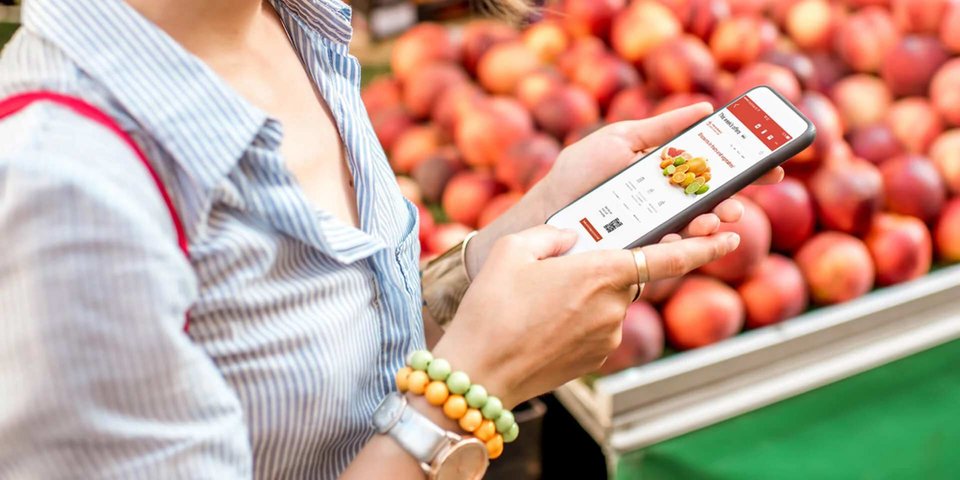
Best Practices for
E-Grocery Implementation
By Nell Alverson, Senior Director of Channel Marketing at ScanSource
The shift toward e-grocery emerged rapidly in the wake of COVID-19. Day in and day out, consumers needed safe access to food and necessities, and retailers followed suit. The quick implementation of curbside pickup, delivery services and in-store digitization has benefitted many industries, including grocery. As retailers large and small have adopted e-grocery processes, consumers are not only comfortable with shopping for groceries online, now they also expect it. Retailers in the grocery space can consider the following best practices when implementing innovative technologies to stay on top of the push towards e-grocery.
Personalize the consumer experience through data and analysis
Capturing consumer data is a necessary pathway to engage with your consumer and ultimately maintain their loyalty. By investing in data collection and analysis, especially purchasing history, retailers maintain the ability to understand their consumers. Powered by this data, retailers can strategize targeted marketing efforts to create a leisurely, personalized shopping experience that enhances the retailer-consumer relationship.
Large retailers began investing in purchase history data collection before the pandemic, and now mid-market retailers are integrating these practices to fully capture their audience and compete with the larger retailers. In tracking purchasing history, retailers unlock the ability to implement push notifications or pop-up ads that speak directly to their consumers’ interests and needs. Through developing these creative marketing practices, retailers can re-engage consumers and recreate impulse purchasing habits that often occur in a traditional in-store environment.
Maintaining avenues for “endcap-like” impulse experiences is especially integral to mitigate the revenue losses that can occur when consumers aren’t shopping in store. Data collection and analysis presents the opportunity for retailers to do this in a more personalized way, creating a shopping experience that is just as good or better than in the in-store environment. For example, consumers are less likely to purchase fresh produce through online shopping, so retailers should strategize other means of revenue through personalization within the e-grocery environment.
Ensure inventory management is in check through tech implementation
With the shift toward e-grocery, retailers must ensure their inventory management system is prepared to handle omni-channel purchasing pathways. It can be a challenge to manage simultaneous purchasing from in-store and online customers, making real-time data capture vital for the proper integration of systems. Retailers of all sizes have begun implementing technology across all stages of the supply chain to streamline these processes and ensure customers' needs are met efficiently.
Radio frequency identification technologies (RFID) are a solution that allows for the tracking and monitoring of products throughout the operations process. By tagging products with RFID identifiers, retailers have increased awareness of product status and availability. In turn, retailers can employ better decision-making and optimization of product availability. RFID identifiers can also be equipped with temperature monitors to ensure the safe transportation of food, pharmaceuticals, and other perishable items. This way, retailers can minimize product spoilage in transit and ensure that teams are ready to efficiently store the products as soon as they arrive.

Capturing consumer data is a necessary pathway to engage with your consumer and ultimately maintain their loyalty. As larger retailers begin utilizing data to customize the customer experience and smaller retailers begin to follow suit, we can expect to see the rise of custom e-grocery shopping experiences.
Given the rise of delivery and in-store pickup, retailers across the board are moving back to an individualized store fulfillment model. In addition to RFID technology, retailers can equip employees with handheld scanners and devices to use in-store. This technology allows employees to rapidly view product availability through the system and ensure inventory data is accurate in real-time. Retailers can be more confident that product availability is up to date, limiting the chance of customer disappointment if inventory changes from time of order to delivery.
For those retailers who are still engaging in off-premises fulfillment, robotics, and artificial intelligence (AI) can be utilized in warehouse and logistics processes. These technologies increase efficiency, and ultimately provide enhanced visibility of inventory availability. Considering recent labor shortages, retailers are turning to robotics and AI to automate processes and improve employee experience. While they have an upfront, fixed cost, robotics and AI also present a valuable opportunity to improve systems through ongoing labor shortages. These cost savings can result in a valuable return on investment in the long-term and can mitigate revenue loss that come from implementing delivery and other e-grocery services.
What’s next for e-grocery?
As larger retailers begin utilizing data to customize the customer experience and smaller retailers begin to follow suit, we can expect to see the rise of custom e-grocery shopping experiences. The increasing emphasis on customer experience and convenience is here to stay. The best way for retailers to benefit alongside their customers is by automating their processes and customizing the experience for their customers.





Luc Filiatreault is the CEO of mdf commerce, a company providing eprocurement and unified commerce B2B SaaS solutions to optimize and accelerate commercial interactions between buyers and sellers, servicing over 600 clients in eCommerce alone. Luc has founded and/or led seven businesses in technology, IT and aerospace, completed two IPOs, and raised multiple levels of funding totaling over 200 M$ from Canadian and US venture capitals, as well as institutional investors.
- Jean-Water Guillery, Director of Product, Omnichannel, Orckestra, powered by mdf commerce